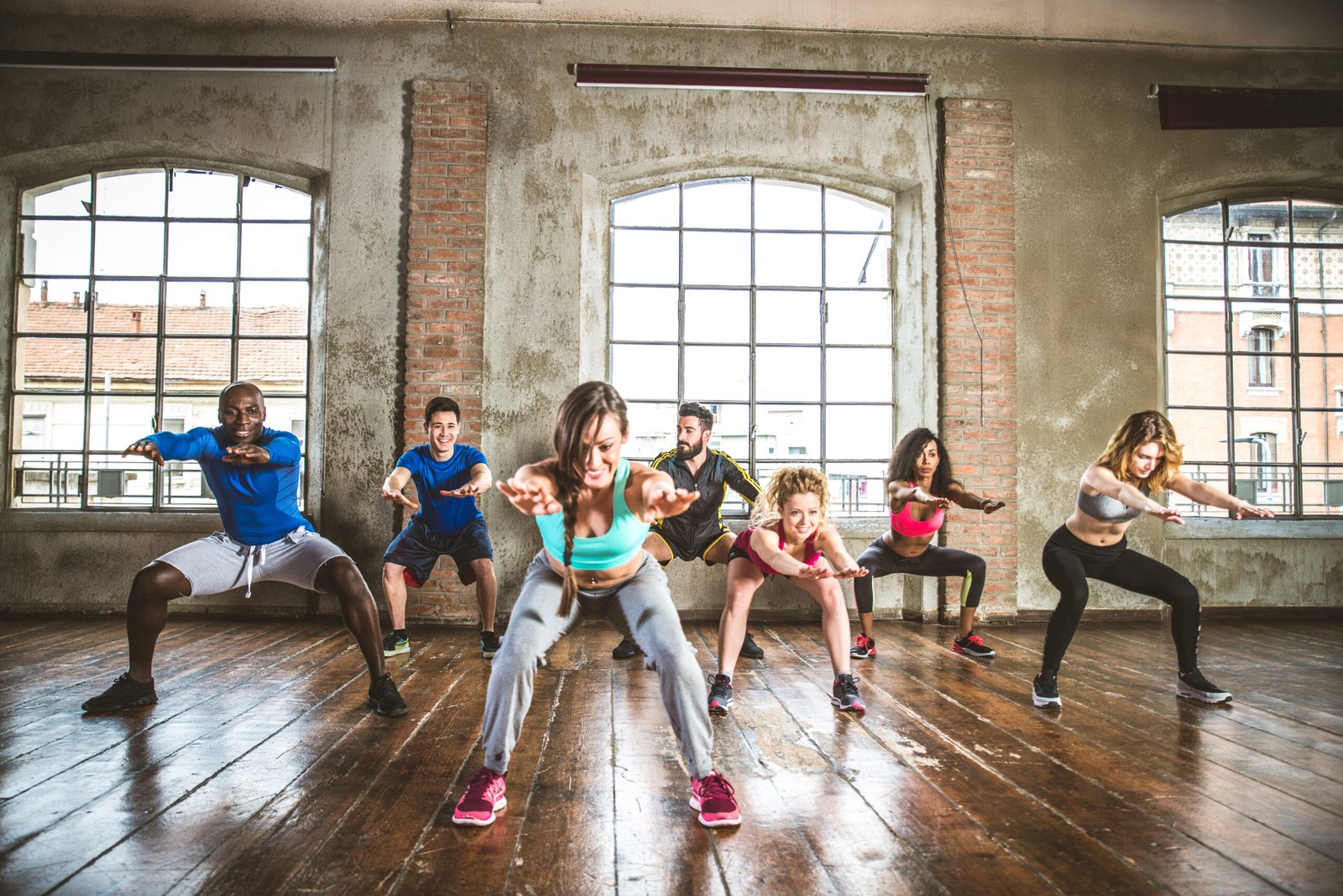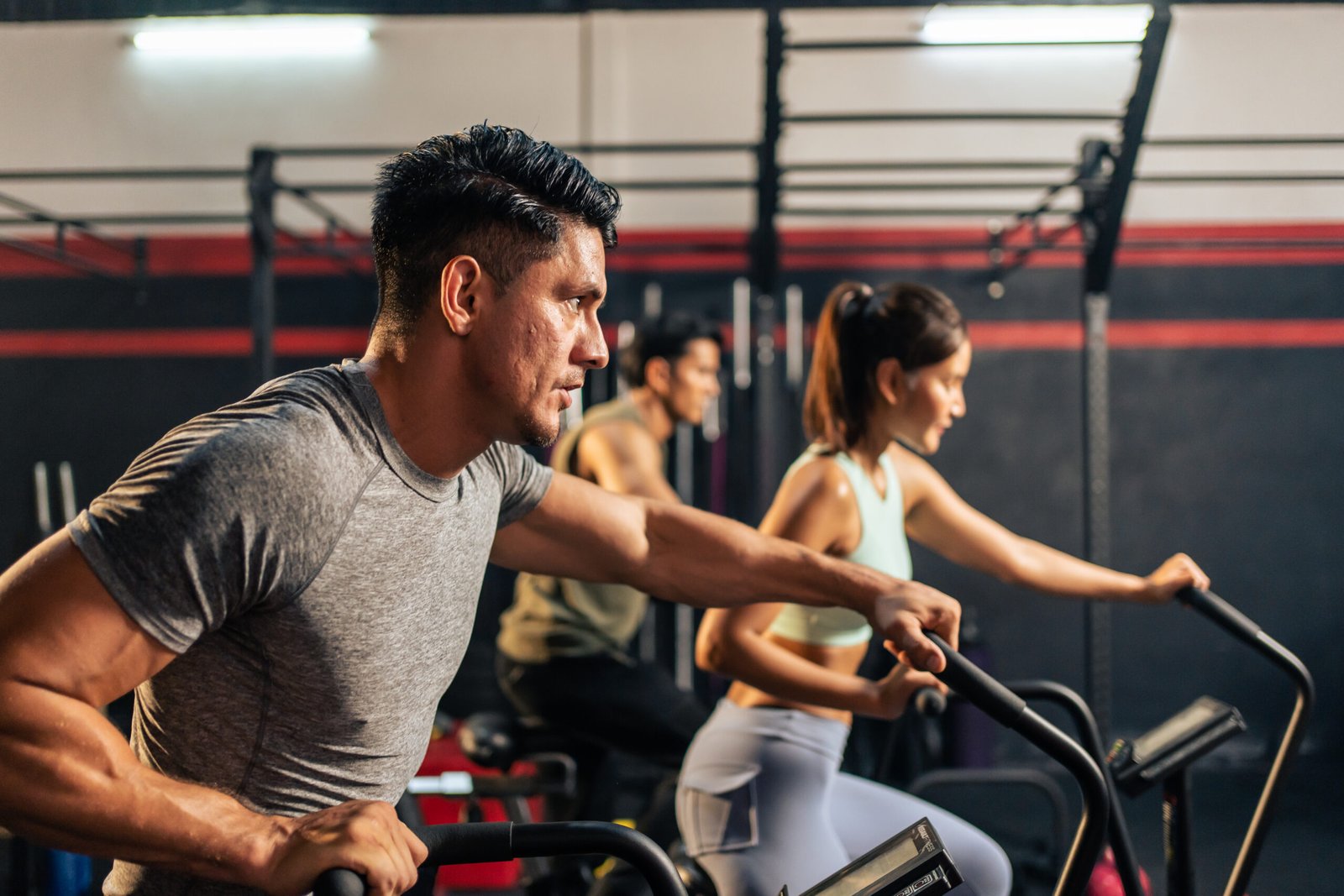Engaging in regular physical activity becomes more crucial as we age, with strength training playing a fundamental role in maintaining health and vitality. This blog post delves into Strength Training for Seniors: Safe Exercises to Enhance Mobility and Strength, offering valuable insights on how seniors can incorporate these essential exercises into their routines safely and effectively. Through tailored strength training, seniors can bolster their mobility, maintain independence, and enhance their overall well-being. Join us as we explore the importance of exercise, suitable exercise types, and recommendations for seniors embarking on this life-enhancing journey.
The Importance of Exercise for Seniors
| Benefit | Description |
|---|---|
| Enhances Physical Health | Improves the ability to perform daily activities by boosting strength and enhancing mobility. |
| Prevents Age-Related Muscle Loss | Reduces sarcopenia (muscle loss due to aging), helping seniors maintain independence and strength. |
| Reduces Risk of Falls | Improves balance and coordination, helping to prevent falls, which can lead to serious injuries. |
| Boosts Mental Health | Regular exercise increases mood and cognitive function, promoting mental wellness and emotional stability. |
| Promotes Longevity and Vitality | Keeps seniors active and vibrant, contributing to a longer, healthier life with greater confidence. |
Exercise holds immense importance in a senior’s lifestyle, acting as the cornerstone of physical health, mobility, and independence. Regular exercise significantly improves seniors’ ability to perform daily activities by boosting strength and enhancing mobility. Engaging in strength training can prevent age-related muscle loss, which is crucial in helping seniors maintain their independence. Moreover, exercise enhances balance and coordination, playing a pivotal role in reducing the risk of falls and related injuries, which can otherwise lead to significant health downturns in older adults.
Beyond the physical benefits, exercise has a profound impact on mental health, known to elevate mood and cognitive function in seniors. Physical activity, including strength training, forms part of a structured approach to promoting longevity and vitality. Not only does it instill a sense of confidence but it is also linked with a heightened quality of life. Through regular, safe exercise routines, seniors can preserve their health, autonomy, and zest for life.
– Enhances physical health, crucial for daily activities
– Prevents age-related muscle loss, aiding in independence
– Reduces risk of falls through improved balance and coordination
– Boosts mental health and cognitive function
– Promotes longevity, vitality, and confidence
Best Types of Exercises for Seniors
| Exercise Type | Description | Recommended Equipment | Key Benefits |
|---|---|---|---|
| Low-Impact Aerobics | Activities like walking, water aerobics, and low-intensity dance classes. | Comfortable shoes, swimwear | Improves cardiovascular health, joint mobility, and overall stamina with minimal strain on the body. |
| Resistance Band Exercises | Flexible, low-impact exercises targeting various muscle groups. | Resistance bands | Safe and effective for seniors to enhance muscle strength without excessive strain. |
| Seated Leg Lifts | Helps improve balance and leg strength by lifting one leg at a time while seated. | No equipment required | Builds strength in the lower body while improving stability. |
| Wall Push-Ups | Gentle upper body exercise that enhances arm, chest, and shoulder strength. | Wall or sturdy surface | Focuses on upper body strength and coordination, improving overall muscle tone. |
| Chair Squats | Strengthening the lower body by squatting while holding onto a chair. | Chair or sturdy surface | Improves leg strength, balance, and stability for daily functional movements. |
Selecting the appropriate types of exercises is critical for seniors to safely improve strength and mobility. Emphasis should be placed on low-impact exercises that minimize stress on the joints while enhancing physical capabilities. Resistance band exercises are particularly beneficial as they are flexible and can be performed safely at home. Exercises like seated leg lifts and wall push-ups help improve balance and strength, specifically targeting the upper body. Regular strength training is essential not merely for maintaining fitness but for improving daily functionality and preserving autonomy over the long term.
Consulting with healthcare or fitness professionals is advised to customize exercise regimens according to individual needs and physical capacities. Personalized exercise routines ensure that seniors maximize benefits while preventing injury. This approach helps in maintaining the highest quality of life as it supports both independence and empowerment through physical wellness.
– Focus on low-impact exercises to minimize joint stress
– Incorporate resistance band exercises for home flexibility
– Enhance balance with seated leg lifts and wall push-ups
– Maintain independence through regular strength training
– Consult healthcare professionals to tailor exercises safely
Low-Impact Aerobics

Low-impact aerobics offer a gentle yet effective way for seniors to engage in physical activity, designed specifically to minimize joint stress. Activities such as walking, water aerobics, and low-intensity dance classes fall under this category, offering cardiovascular benefits while simultaneously supporting joint health. These exercises are essential for improving balance and coordination, which are critical for reducing the risk of falls. Their adaptability allows them to be easily modified, suiting varying fitness levels among seniors.
For seniors, enhancing cardiovascular health, while maintaining joint mobility, is crucial. Low-impact aerobics serve this dual purpose, enabling seniors to remain active without putting undue strain on their bodies. Through these exercises, seniors can build a solid foundation for health and longevity, paving the path to a more active, fulfilling life.
– Walking for cardiovascular health and joint support
– Water aerobics to reduce falls risk while enjoying a gentle workout
– Low-intensity dance classes for fun coordination improvement
Strength Training
| Exercise | Target Area | Instructions | Frequency |
|---|---|---|---|
| Resistance Band Workouts | Full Body | Perform controlled movements with resistance bands to target multiple muscle groups. | 2-3 times per week, increasing intensity gradually. |
| Bodyweight Exercises | Core, Legs, Upper Body | Include exercises like squats, push-ups, and leg lifts. Ensure proper form to avoid strain. | 2-3 times per week, ensuring proper rest. |
| Light Weightlifting | Upper Body, Legs, Core | Start with light weights (2-5 lbs) to improve muscle strength. Gradually increase weight over time. | 2-3 times per week, under professional supervision. |
| Chair Squats | Lower Body (Legs) | Stand in front of a sturdy chair, squat down to touch the seat lightly, then rise back up. Keep knees aligned over toes. | 2-3 times per week, 10-15 repetitions. |
| Seated Leg Lifts | Lower Body (Legs, Core) | Sit on a chair and lift one leg at a time, keeping the leg straight. Hold for a second before lowering. | 2-3 sets of 10 repetitions per leg. |
Strength training emerges as a fundamental component for seniors seeking to maintain and improve mobility, strength, and general health. Notably, this form of exercise enhances bone density, reduces the fall risk, and improves balance, essential attributes for independent living. Safe exercises tailored for seniors include resistance band workouts, bodyweight exercises, and light weightlifting, all of which cater to different fitness levels and preferences.
Seniors are encouraged to initiate their strength training journey with low-intensity routines, gradually increasing the intensity under professional guidance for safety. Regular strength training cultivates confidence, fosters vitality, and significantly enhances the overall quality of life. By maintaining an active lifestyle centered around appropriate strength exercises, seniors can enjoy both physical and mental health benefits, marking a vibrant, independent living.
– Resistance band workouts for controlled strength development
– Bodyweight exercises for versatility and accessibility
– Light weightlifting tailored for improving bone density
– Initiate with low intensity, gradually increasing under guidance
– Consistent training boosts confidence and vitality
Flexibility and Balance Exercises
| Exercise | Target Area | Description | Benefits |
|---|---|---|---|
| Standing Quad Stretch | Quadriceps, Hips | Stand and hold onto a chair or wall for balance, pull one foot toward your buttocks, and hold for 30 seconds, then switch legs. | Improves flexibility in hips and thighs, preventing stiffness. |
| Toe Touch Stretch | Lower Back, Hamstrings | Stand with legs straight and gently bend forward at the hips to touch your toes. Hold for 20-30 seconds and then rise slowly. | Increases flexibility in the lower back and hamstrings, easing stiffness. |
| Shoulder Rolls | Shoulders, Neck | Sit or stand with shoulders relaxed, roll them forward in a circular motion, then reverse direction. | Relieves tension in shoulders and neck. |
| Cat-Cow Stretch | Spine, Lower Back | On all fours, alternate between arching your back toward the ceiling (Cat) and dropping your belly toward the floor (Cow). Hold each position for a few seconds. | Enhances spinal flexibility and promotes better posture. |
| Seated Hamstring Stretch | Hamstrings, Lower Back | Sit on the edge of a chair, extend one leg out with your heel on the floor, and bend forward slightly to stretch your hamstrings. | Targets hamstring flexibility, which is important for posture and walking. |
Flexibility and balance exercises form crucial elements of a senior’s strength training routine, aiding in better overall mobility and reducing fall risks. Regularly incorporating these exercises not only enhances joint range of motion but also facilitates everyday movements, making them smoother and more comfortable. Balance exercises focus on stabilizing the body’s center of gravity, contributing to better posture and coordination, essentials in daily activities.
Stretching and flexibility workouts prevent stiffness, increase circulation, and support quicker recovery from physical exertion or minor injuries. Many of these exercises require minimal equipment, making them accessible and adaptable to various fitness levels. By prioritizing flexibility and balance, seniors can significantly improve their ability to perform daily tasks, bolstering both their confidence and independence.
– Enhance joint range of motion with regular stretching
– Stabilize posture through focused balance exercises
– Prevent stiffness and improve circulation for faster recovery
– Minimal equipment required for accessibility
– Improves daily task performance, boosting confidence
Strength Workout for Seniors
| Exercise | Target Area | Instructions | Key Benefits |
|---|---|---|---|
| Chair Squats | Lower Body (Legs) | Stand in front of a chair, squat down slowly while keeping your knees behind your toes, and then return to standing. Focus on controlled movements. | Strengthens legs and improves mobility without joint strain. |
| Resistance Band Rows | Upper Body (Back, Arms) | Sit in a chair, loop a resistance band around your feet, hold both ends, and pull the band towards your torso, keeping elbows close to the body. | Strengthens upper back and arms, helping with posture and functional movement. |
| Seated Leg Extensions | Lower Body (Legs) | Sit in a chair, extend one leg out straight, hold for 5-10 seconds, and slowly lower it. Repeat with the other leg. | Enhances leg strength and mobility, particularly important for arthritis sufferers. |
| Wall Push-Ups | Upper Body (Arms, Chest) | Stand facing a wall, place your hands on it, and perform push-ups by lowering your body toward the wall, then pressing back up. | Builds upper body strength, especially in the chest and arms, without straining wrists or elbows. |
| Step Touches | Lower Body (Legs) | Stand with feet together, take one step to the side, then bring the other foot to meet it. Alternate side steps to increase heart rate and coordination. | Improves leg strength, balance, and cardiovascular health. |
When designing strength workouts for seniors, the focus should be on low-impact, effective exercises suited to accommodate varying fitness levels. Proper form must be prioritized to avert injuries and ensure that each workout delivers maximum benefits. Key exercises such as chair squats, wall push-ups, and seated leg lifts effectively enhance both strength and balance.
For optimal results, seniors are encouraged to adopt a consistent workout routine, ideally engaging in strength exercises two to three times a week. The mental and emotional rewards of regular strength training are substantial, resulting in increased confidence and improved overall well-being. Through structured strength workouts, seniors can carve a path to a healthier, more independent lifestyle.
– Chair squats for lower body strength and balance
– Wall push-ups to enhance upper body capability
– Seated leg lifts to boost leg strength and stability
– Consistent routine improving results and confidence
– Supports mental and emotional well-being through exercise
Low-Impact Cardio Workout for Over 50s

Low-impact cardio workouts are perfect for individuals over 50, offering a way to maintain cardiovascular health while minimizing joint stress. These exercises improve endurance and energy levels, essentials for sustaining an active lifestyle. Walking, swimming, cycling, and the use of elliptical machines or recumbent bikes are popular choices within this category.
Incorporating low-impact cardio into a fitness regimen helps to enhance heart health and complements strength training exercises, creating a balanced workout routine. For seniors, these activities offer a safe and effective means of improving overall well-being, ensuring that mobility and vitality remain at peak levels as they pursue a healthy lifestyle.
– Walking for low joint impact and cardiovascular benefits
– Swimming for full-body engagement with weightlessness
– Cycling for endurance and heart health boost
– Elliptical machines offering gentle, low-impact cardio
– Complements strength training, enhancing overall well-being
Home Workout for Seniors
Home workouts present a practical option for seniors aiming to boost vitality and confidence through strength training. These safe exercises are tailored to enhance mobility and increase overall strength from the comfort of one’s home. The benefits of home workouts are manifold, including convenience and comfortability, enabling seniors to exercise within familiar surroundings.
Incorporating gradual progression and gentle modifications ensures that seniors can achieve results without undue strain. However, seniors should consult healthcare professionals before embarking on any new workout regimen, ensuring safety and customization to suit individual health needs and capabilities. By embracing home workouts, seniors create a structured environment to enhance their physical and mental wellness safely.
– Convenience and comfort of exercising at home
– Gradual progression for safe improvement
– Gentle modifications to suit individual abilities
– Consultation with healthcare professionals recommended
– Ensures structured environment for overall wellness
Strength and Balance Workout for Seniors
| Exercise | Target Area | Instructions | Recommended Equipment |
|---|---|---|---|
| Chair Squats | Lower Body (Legs) | Stand in front of a sturdy chair and squat down to lightly touch the seat before rising back up. Focus on controlled movements. | Chair or sturdy surface |
| Wall Push-Ups | Upper Body (Arms, Chest) | Stand facing a wall, place hands on the wall, and perform push-ups by lowering and raising your body in a controlled manner. | Wall or sturdy surface |
| Resistance Band Squats | Full Body (Legs, Core) | Secure a resistance band around your thighs and squat down, using the band’s resistance to increase difficulty. | Resistance band |
| Seated Leg Lifts | Lower Body (Legs) | Sit in a chair, lift one leg at a time, holding each lift for a second to build strength in the thighs and improve balance. | No equipment required |
| Step-Ups | Lower Body (Legs) | Use a sturdy step or platform, stepping up and down, alternating legs. This exercise strengthens the legs while improving balance. | Sturdy platform or step |
Strength and balance workouts are pivotal for seniors, enhancing overall mobility and minimizing fall risk. Exercises tailored for seniors help in building muscle strength and boosting stability, crucial factors in promoting independence in daily activities. Such exercises not only bolster physical confidence but also foster a sense of autonomy and well-being.
Modifying exercises to suit different fitness levels ensures safety and accessibility, allowing seniors to derive significant long-term health benefits. By incorporating regular strength and balance training, seniors maintain better health, independence, and vibrant daily living. Such dedication to fitness forms the foundation for a safer and more dynamic lifestyle.
– Muscle-building exercises improving stability and balance
– Independence in daily activities through consistent workouts
– Modifications tailored for accessibility and safety
– Long-term health gains through regular training
1. What are the Benefits of Strength Training for Seniors?

Strength training offers a plethora of benefits for seniors, enhancing both physical capabilities and overall health. Regularly engaging in these exercises improves muscle mass and strength, enabling seniors to perform daily activities more effortlessly and reducing the risk of falls, which is crucial for maintaining independence. Additionally, strength training boosts bone density, significantly decreasing the likelihood of fractures and osteoporosis, a common concern with the aging process.
Moreover, strength training positively impacts metabolism, aiding in efficient weight management and contributing to overall health. This activity supports joint health by increasing mobility and alleviating arthritis symptoms, promoting an active lifestyle free from discomfort. Importantly, strength training elevates mood and confidence, fostering mental well-being and enabling seniors to enjoy life more independently.
– Enhances muscle mass and strength for independence
– Increases bone density, reducing fracture risk
– Supports efficient metabolism and weight management
– Alleviates arthritis symptoms for improved mobility
– Boosts mood and confidence for better mental well-being
2. How Can Seniors Start a Safe Strength Training Routine?
Beginning a strength training routine necessitates a thoughtful approach to ensure safety and effectiveness, particularly for seniors. The process should start with a consultation from a healthcare professional to tailor the routine to individual health needs. Focus should be placed on low-impact exercises that minimize injury risk while gradually building strength.
Incorporating resistance bands or light weights enables seniors to engage in strength training safely while maintaining proper form for optimized safety. Initial sessions should remain short, progressively increasing in frequency and intensity as comfort and ability improve. Prioritizing consistency ensures seniors achieve optimal results, with flexibility and balance exercises complementing the strength training to create a well-rounded fitness routine.
– Begin with a professional healthcare consultation
– Focus on low-impact to minimize injury risk
– Use resistance bands or light weights safely
– Gradually increase frequency and intensity
– Combine with flexibility and balance exercises
3. What Exercises are Recommended for Enhancing Mobility and Strength in Seniors?
| Mistake | Description | Solution |
|---|---|---|
| Lifting Too Much Weight | Seniors might be tempted to lift weights that are too heavy, risking injury to muscles, joints, and tendons. | Start with light weights and increase gradually as strength builds, focusing on controlled movements. |
| Skipping Warm-Ups or Cool-Downs | Not warming up or cooling down before and after strength training exercises can lead to injuries and delayed recovery. | Always perform a warm-up to prepare muscles, and a cool-down after to relax muscles and promote recovery. |
| Poor Form | Incorrect form or posture while performing exercises can cause strain on joints and muscles, leading to injury. | Focus on maintaining good posture and proper form, and consider working with a trainer to ensure correct technique. |
| Ignoring Pain or Discomfort | Continuing exercises despite pain or discomfort can lead to serious injury, particularly in the joints. | Stop immediately if pain is felt, and consult a healthcare provider for personalized adjustments to the routine. |
| Not Progressing Gradually | Jumping into intense workouts too quickly without allowing the body to adjust can increase the risk of overuse injuries. | Gradually increase the intensity, frequency, and resistance over time as your body becomes stronger. |
Safeguarding mobility and strength in seniors involves engaging in exercises designed to meet and support these goals. Balance exercises like tai chi and standing on one foot are instrumental in improving stability and preventing falls. Low-impact aerobic activities such as walking or swimming enhance cardiovascular health while boosting endurance.
Incorporating resistance bands for strength training enables muscle-building without exerting undue joint stress, making them ideal for seniors. Practices like yoga or pilates serve to increase flexibility and core strength, promoting better posture and balance. Lastly, bodyweight exercises such as squats and wall push-ups contribute to strength development, ensuring seniors achieve functional mobility with minimal risk.
– Balance exercises like tai chi for stability
– Low-impact aerobics for cardiovascular endurance
– Resistance bands for strength without joint stress
– Yoga or pilates for flexibility and core strength
– Bodyweight exercises like squats stress reduction
4. How Often Should Seniors Engage in Strength Training Exercises?
| Guideline | Details |
|---|---|
| Frequency of Training | Seniors should aim for 2-3 strength training sessions per week, ensuring a rest day between sessions for muscle recovery. |
| Start with Low Intensity | Begin with low-intensity exercises and gradually increase the difficulty level as strength improves. |
| Progress Gradually | Increase weight, resistance, or repetitions slowly to avoid injury. |
| Consult Professionals | Always consult with a healthcare professional or physical therapist before starting or modifying a strength training routine. |
| Warm-Up and Cool-Down | Incorporate a warm-up before each session and a cool-down afterward to prevent injuries and enhance recovery. |
To derive the full spectrum of benefits, seniors should aim to engage in strength training exercises at least two to three times per week. This frequency helps achieve optimal results while allowing time between sessions for muscle recovery, essential for strengthening and growth. Proper form and technique should be keenly focused on, aiding in injury prevention and maximizing each exercise’s effectiveness.
Gradually increasing the intensity, weight, or resistance further promotes strength development as confidence and capability grow. Consulting with a fitness professional or physical therapist ensures a program tailored to individual health conditions and personal goals, promoting both safety and effectiveness in strength training routines.
– Engage in exercises two to three times weekly
– Allow rest days for recovery and growth
– Focus on proper form to prevent injuries
– Gradually increase intensity for strength development
– Consult professionals for tailored programs
5. Are There Any Precautions Seniors Should Take Before Starting a Strength Training Program?

Before embarking on a strength training program, seniors must consider several precautions to ensure safe and effective practice. Consulting a healthcare professional or physical therapist is vital to assess individual health conditions and receive personalized advice, setting a firm foundation for the new routine. Beginning with low-intensity exercises and gradually increasing resistance prevents injury while allowing the body to adapt safely over time.
Proper form and technique are crucial to maximizing benefits and reducing the risk of strains and injuries. Including a thorough warm-up and cool-down routine prepares muscles and joints for the workout and enhances recovery afterward. For added safety, consider working with a certified trainer experienced in senior fitness to ensure exercises are performed correctly and effectively.
– Consult healthcare professionals for personalized advice
– Start with low-intensity, increasing resistance gradually
– Focus on proper form and technique
– Warm-up and cool-down to prepare and recover muscles
– Consider a certified trainer for safe practice
Embrace a Future Full of Vitality and Strength
Transitioning into a lifestyle that incorporates strength training can be transformative for seniors, unlocking new levels of vitality, confidence, and independence. Through thoughtful exercise choices and guided routines, seniors can improve their mobility safely. Exercise isn’t solely a tool for maintaining physical health but is also a means to celebrate the full spectrum of life well into the golden years. As you or your beloved seniors embark on this journey, remember that safety, adaptability, and joy are paramount. Embrace these exercises, and watch as they weave a healthier, more fulfilling narrative into the daily tapestry of life.














